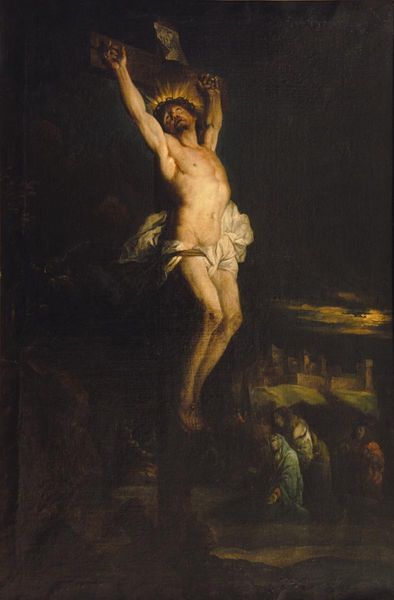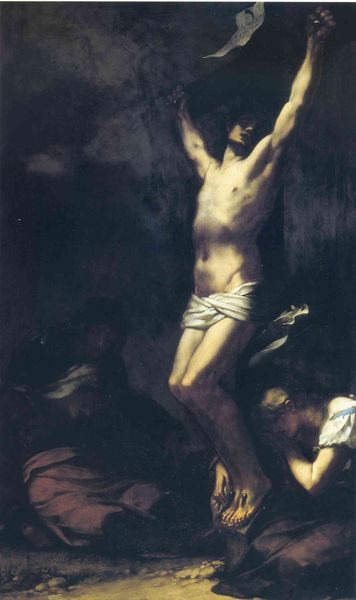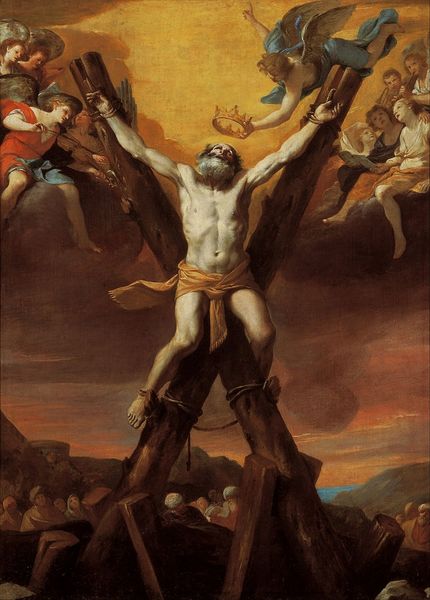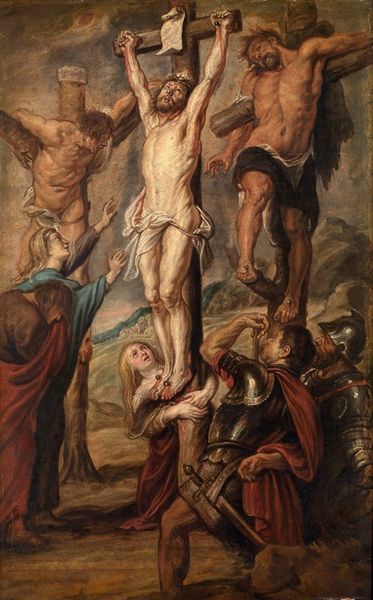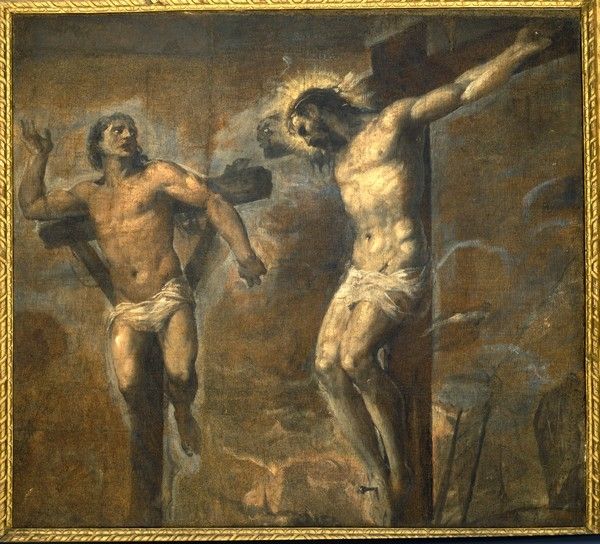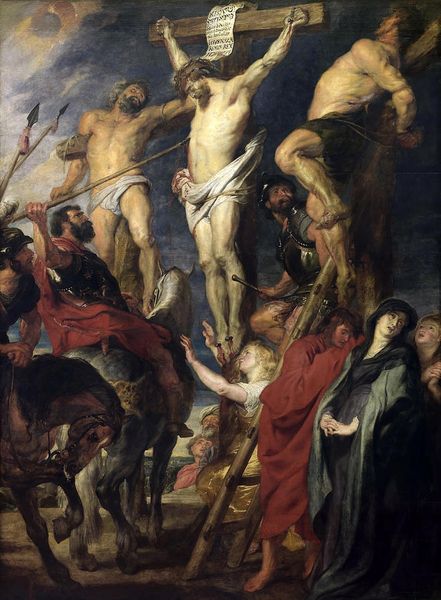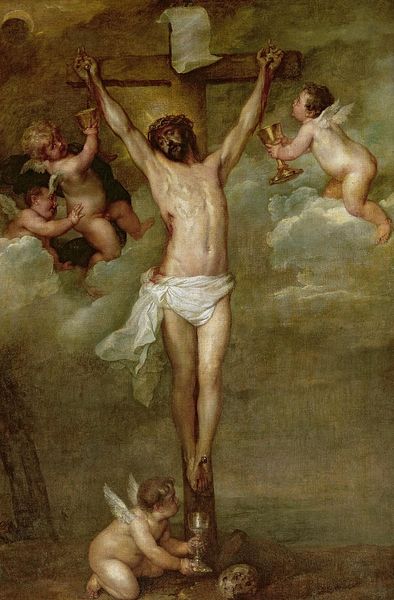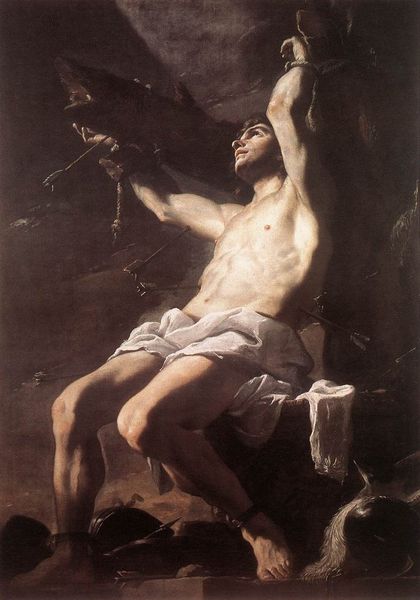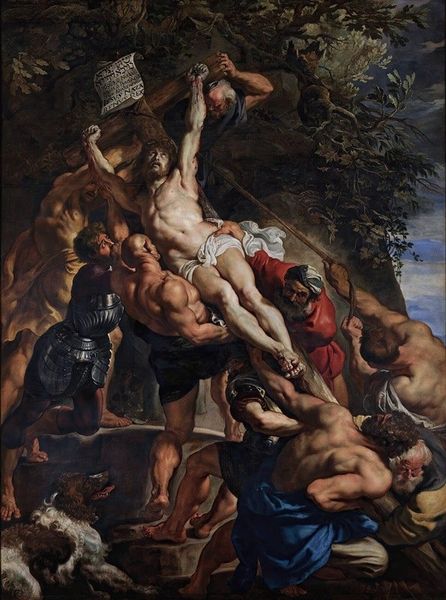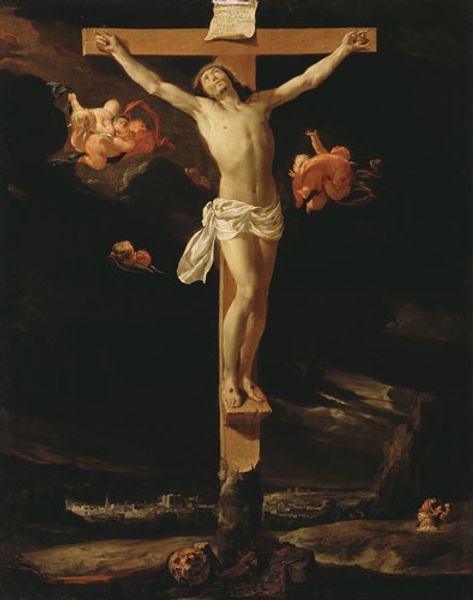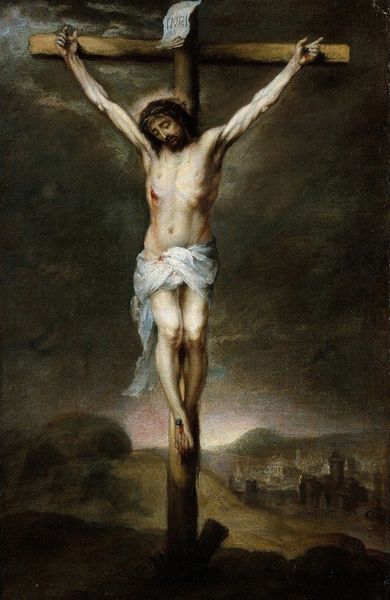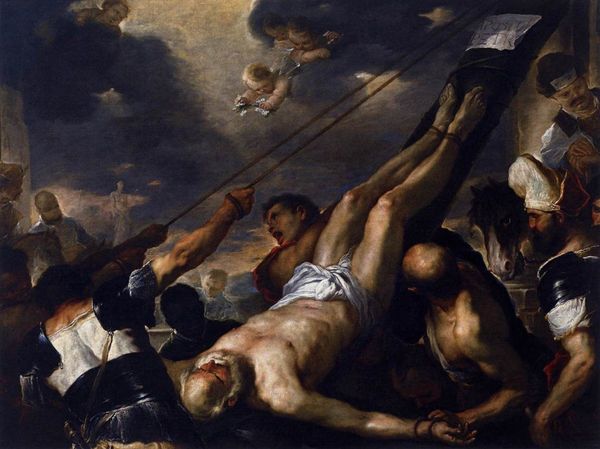
painting, oil-paint
#
painting
#
oil-paint
#
figuration
#
oil painting
#
romanticism
#
history-painting
#
realism
Copyright: Public Domain: Artvee
Editor: This is Eugène Delacroix's *Christ on the Cross* from 1846, rendered in oil paint. The palette is dark and brooding, and there’s a real sense of drama in the composition. It feels almost like a storm is brewing, both literally and figuratively. What stands out to you when you look at it? Curator: Well, isn't it just brimming with passion? Delacroix, he was all about feeling. Notice how the brushstrokes are almost violent, full of movement. The whole canvas throbs with life—or rather, the transition from life to death. It’s not just a historical scene, it's a raw human moment captured with ferocious energy. Do you sense that almost theatrical intensity, that push and pull? Editor: Absolutely! It's hard to ignore. The stark contrast between the illuminated figure of Christ and the encroaching darkness intensifies that feeling. Curator: It does, doesn’t it? Now, consider this: Delacroix was painting during a time of great upheaval, a period hungry for stories of heroism and sacrifice. Christ on the cross becomes a symbol, not just of religious faith, but of revolutionary zeal. Does that shift your perspective at all, to see it less as a purely religious icon and more as a political statement, perhaps? Editor: I never really considered it from that angle. I was too caught up in the suffering. Thinking about the political context makes me see how universally relatable that feeling of sacrifice must have been. Curator: Precisely! And that, my dear, is the magic of art. It’s always reflecting the world, even when it’s pointing towards the heavens. I think I will never view another painting like this in the same way. Editor: Thank you, I feel the same. This was insightful.
Comments
No comments
Be the first to comment and join the conversation on the ultimate creative platform.
